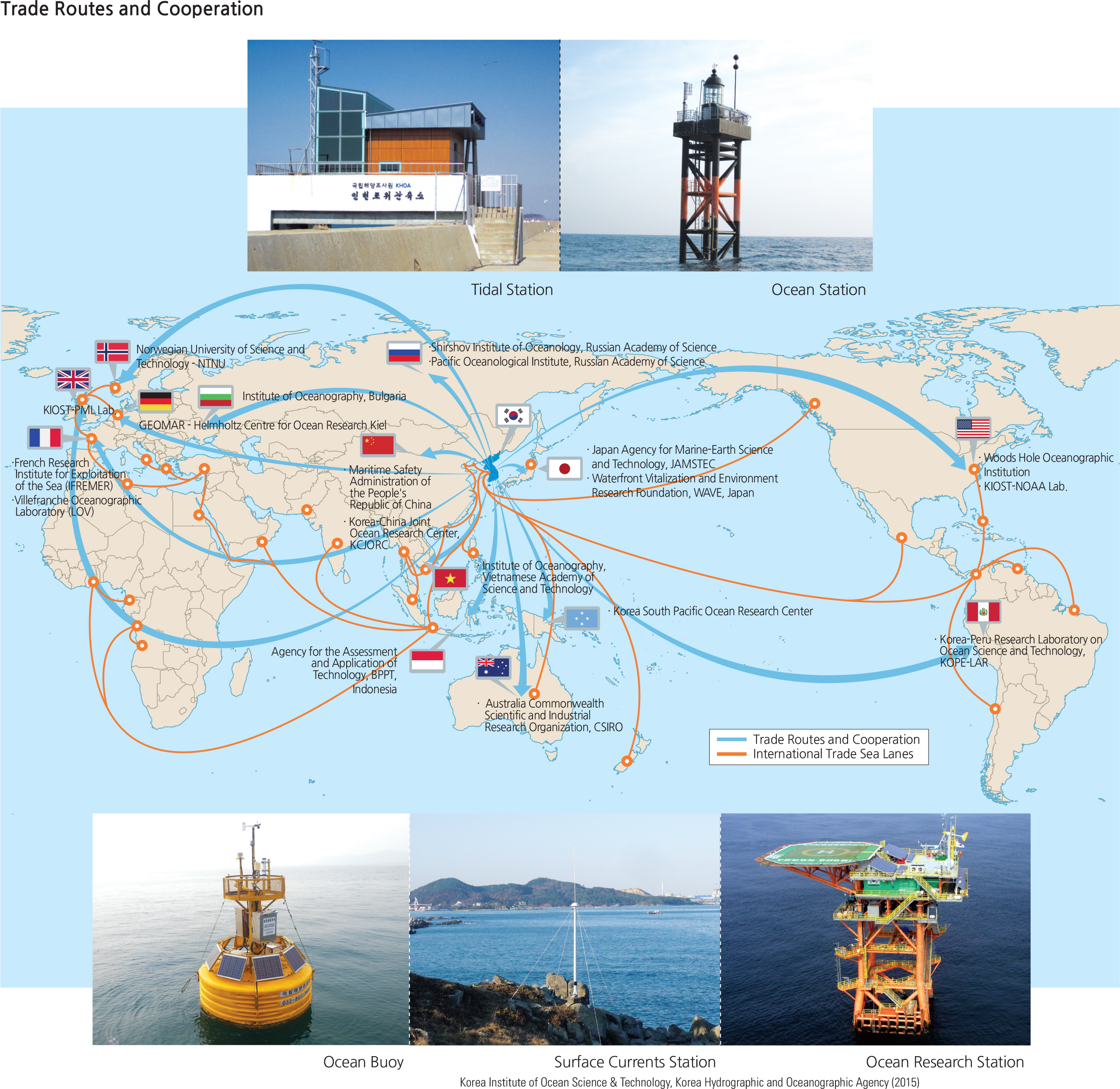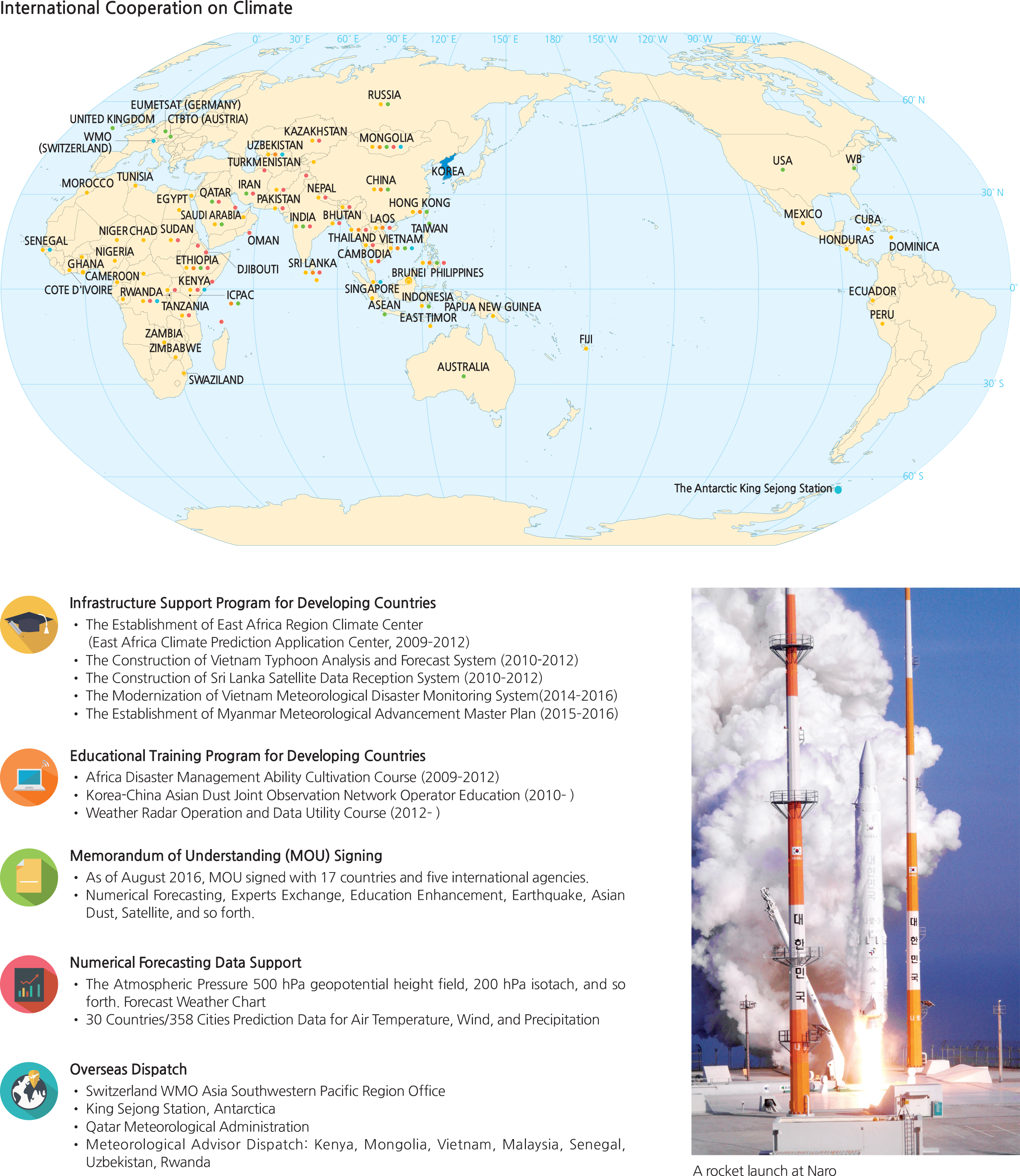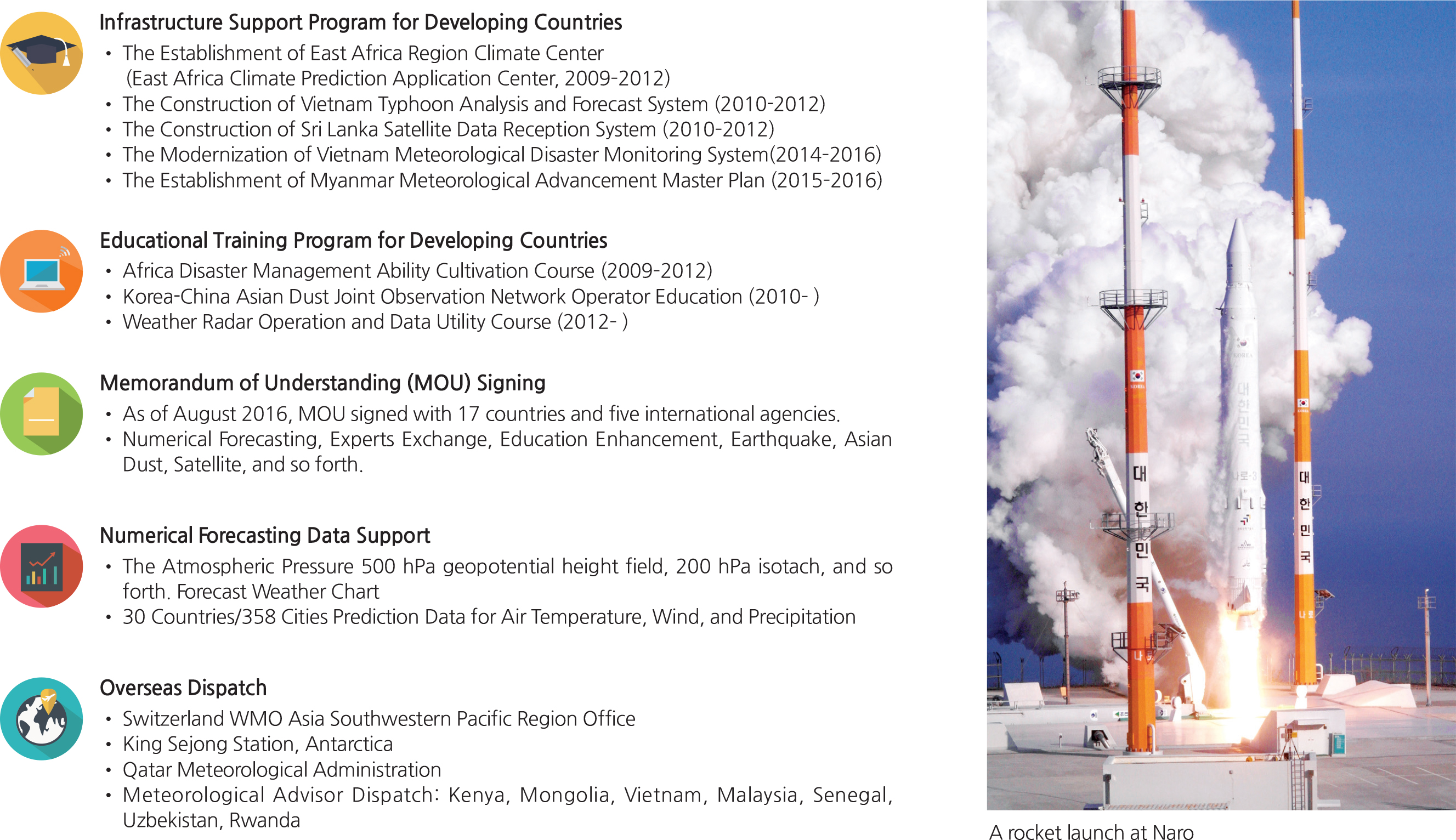for Children
Many environmental problems related to the ocean and atmosphere—uch as climate change, sea level rise, and marine plastic debris—re complex and global in nature and therefore require international cooperation between many countries. Korea has been active both at home and abroad in the scientific study of oceanic and atmospheric phenomena. The Korea Ocean Observing Network (KOON) is designed to manage and monitor ocean conditions within Korea’ sovereign marine areas. It consists of tidal stations, buoys, current stations, and an ocean research platform. The data generated by KOON sites are used to help monitor environmental changes and to plan for disaster mitigation.
Korea is a world leader in the science of climate change, working closely with many international organizations including the World Meteorological Organization (WMO). The Korea Meteorological Administration (KMA) has been an executive council member of the WMO since 2007. KMA helps with education initiatives, coordination of scientific projects, and international collaborations. Some of Korea’ activities related to atmospheric science are indicated on the map below.
|


